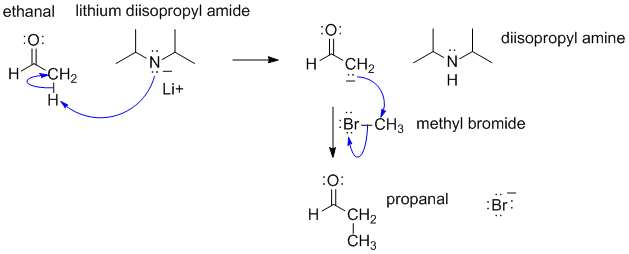
Part 7: MECHANISM
The following diagram shows the solution to the
mechanistic question. Note that all the information applies to a single
reaction sequence that has been completely described verbally.
There is no need for extra reagents or
extra steps etc. The curly arrows are drawn specifically to match the
text in the question. The biggest problem students have is making sure they
understand the language of chemistry. Most students have trouble because they
can't draw the structures from the IUPAC names (that means they don't know their
nomenclature well enough). Read the words carefully, and then make the curly
arrows tell that same story. There is NO need for extra steps. Remember
curly arrows go from electron rich to poor and to balance the
formal charges at each step - errors on formal charges were common.
a.

If you struggled with this part of the question, first draw the compounds whose names were provided, then think about the types of reactions (e.g. acid / base) and try to fill in the structures in the gaps, then finally add the required curly arrows to account for all the bonding changes.
b. Both systems are C-H bonds. Aldehydes have a pKa of about 17 due to the acidity of the hydrogens in the group adjacent to the C=O. Removal of such a proton gives a carbanion as the conjugate base that is stablised by a resonance interaction that delocalises the -ve charge on to the electronegative oxygen in the carbonyl group (i.e. an enolate). Alkanes have a pKa > 50 since the deprotonation of the C-H bond gives an unstabilised carbanion.

c. In the analogous reaction, ethanal would need to be deprotonated and reacted with 1-bromobutane to give hexanal. C2 + C4 = C6.

Common errors:
a.
b. Did not correctly show or describe the resonance stabilisation of the enolate.
c. Did not count carbon atoms correctly and therefore suggested 1-bromopropane (C3) or 1-bromopentane (C5)